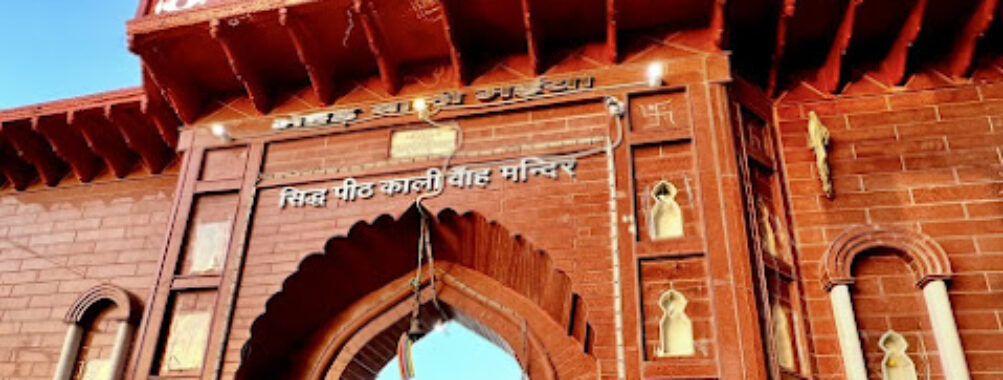
Kali Bahan Mandir Etawah
Table of Contents Kali Bahan Mandir in Etawah, Uttar Pradesh, stands as one of those places that quietly captures the essence of India’s deep-rooted devotion to Goddess Kali. The temple holds a powerful presence in the region, not just because of its history or architecture but for the way it makes people feel—calm, humble, and connected to something older than memory. One might say that this temple isn’t just visited—it’s experienced. Those who come here often speak of a kind of peace that lingers long after they leave. Set along the peaceful banks of the Yamuna River, Kali Bahan Mandir has long been a sacred spot for devotees of Maa Kali. The temple is said to have been established during an early period marked by immense spiritual activity in Etawah. There’s even a faint local story that links it to the Mahabharata era, suggesting that warriors once prayed here before heading to battle. Whether myth or truth, what’s undeniable is that the site carries that air of mysticism you feel in ancient places. The goddess Kali, as represented here, is fierce yet nurturing, and many come to seek her blessings for protection and strength. One personal observation—having visited countless temples across northern India, there’s something distinct about this one. It doesn’t overwhelm the senses. It’s grand yet unpretentious, deeply spiritual without being imposing. When the evening aarti begins and the temple bells ring, the sound mingles with the murmur of the Yamuna, and for a brief moment, everything feels perfectly in sync. The temple complex is well maintained and equipped with basic amenities such as restrooms and accessible facilities for elderly visitors and those with disabilities. It also provides onsite services to assist pilgrims. The pathways are wide, and the surrounding gardens are clean, reflecting the devotion and care of those who manage it. This combination of accessibility and old-world sanctity makes it a special destination—not just for locals but for travelers making their way through Uttar Pradesh in search of meaningful experiences. For those who love temples that tell stories without saying much, this one fits perfectly. The combination of faith, nature, and local devotion forms a blend that isn’t easy to replicate. People often describe their visit as emotionally restorative, especially during dawn or dusk, when the light paints the temple a golden hue. Planning your visit to Kali Bahan Mandir depends largely on what kind of experience you want. For cooler weather and manageable crowds, October to March tends to be ideal. During this period, the mornings are crisp, and the evenings are pleasantly chilly—perfect for temple walks and reflection by the river. If you visit around the time of Navratri, which typically falls between September and October, be ready for energy and crowds unlike any other time of year. The temple comes alive with processions, offerings, and the sound of conch shells. I’ve been there once during Navratri—it’s as though the place breathes differently, the collective devotion almost tangible in the air. For those who appreciate quieter visits, weekdays outside festival times are more suitable. Avoid peak summer months from May to July if you’re not fond of the heat—it can get intense. Early mornings and evenings are comfortable for darshan even in warmer months. Monsoon season paints the entire temple area green, but the walkways can get slippery, so tread carefully. Kali Bahan Mandir is located within easy reach of the main parts of Etawah city, making it quite accessible by road. If you’re arriving from Delhi or Agra, the most convenient route is via NH19, with smooth connectivity all the way. From Kanpur or Lucknow, the train services to Etawah Junction are frequent and reliable. Once in the city, local auto-rickshaws and taxis will take you directly to the temple’s entrance. The rides are inexpensive and often scenic, passing through bustling local markets and rural stretches of countryside. For travelers flying into Uttar Pradesh, the nearest major airport is in Agra, which is about three hours away by road. It’s a decent drive, especially if you enjoy open highways and glimpses of small village life along the route. Many visitors combine their trip to Kali Bahan Mandir with other nearby heritage spots, such as the Chambal ravines or the temples in nearby districts, making it a fulfilling loop of culture and devotion. The temple also offers parking for private vehicles, which makes it easy if you’re traveling with family. I still remember the first time I came here—it wasn’t planned at all. A local friend insisted we take a detour from our route. The journey took us across small bridges and sleepy roads lined with neem trees. By the time we reached the temple, just around sunset, the sound of bells was echoing through the air, and for a visitor like me, that first moment of calm was unforgettable. Here are some things to keep in mind that might make your visit to Kali Bahan Mandir smoother and more memorable: Personally, I think what makes this place worth returning to is its authenticity. It’s not commercialized or overly polished; it’s real, alive, and deeply personal. Whether you’re a pilgrim, a history buff, or someone simply seeking quiet reflection, this temple rewards your curiosity in more ways than one. Kali Bahan Mandir isn’t just another religious stop—it’s a reminder of how faith, simplicity, and natural beauty can coexist so gracefully in India’s heartland.Description
Key Features
Best Time to Visit
How to Get There
Tips for Visiting
Location
Places to Stay Near Kali Bahan Mandir Etawah
Find and Book a Tour
Explore More Travel Guides
No reviews found! Be the first to review!